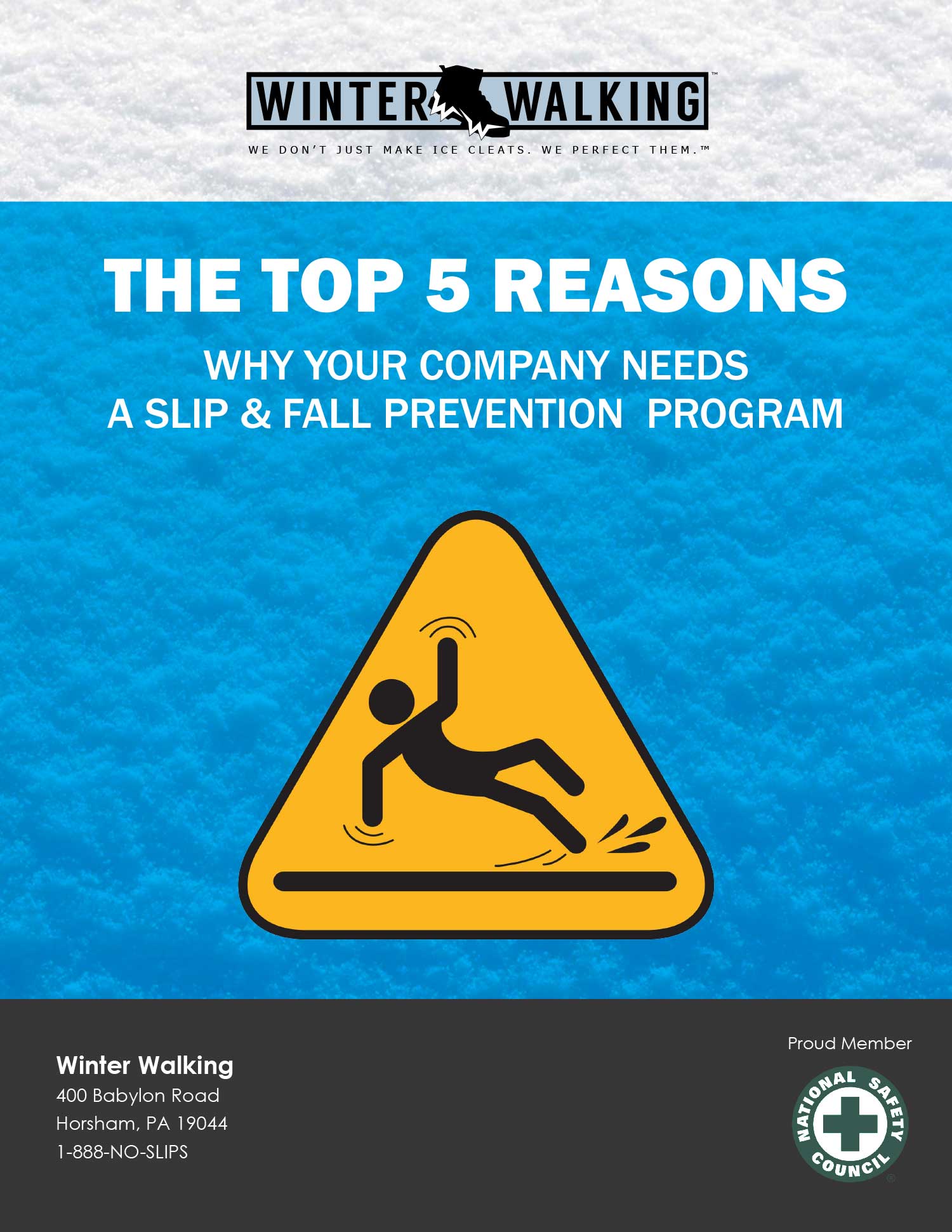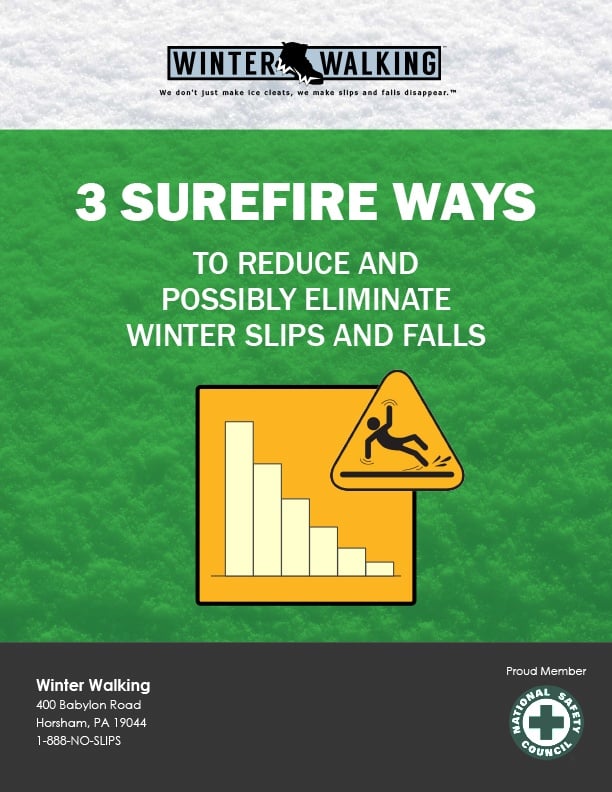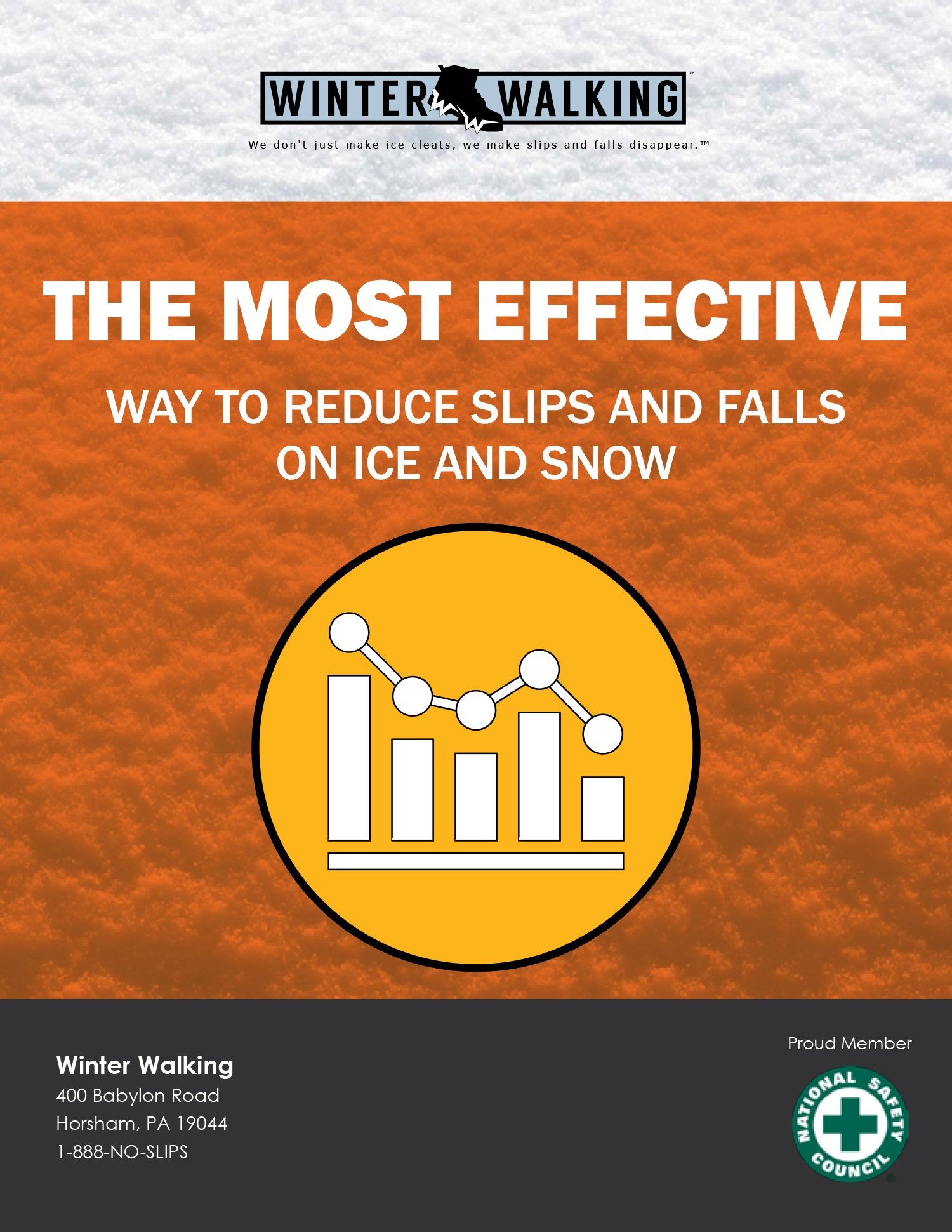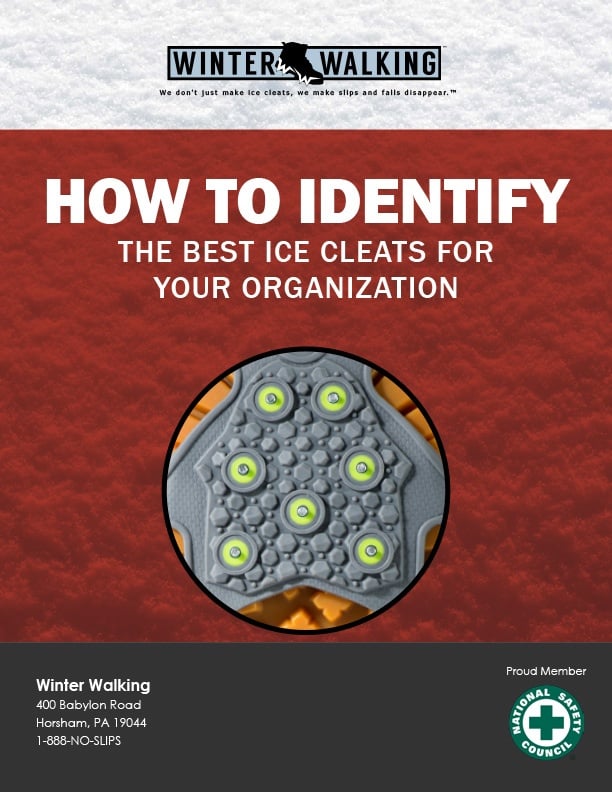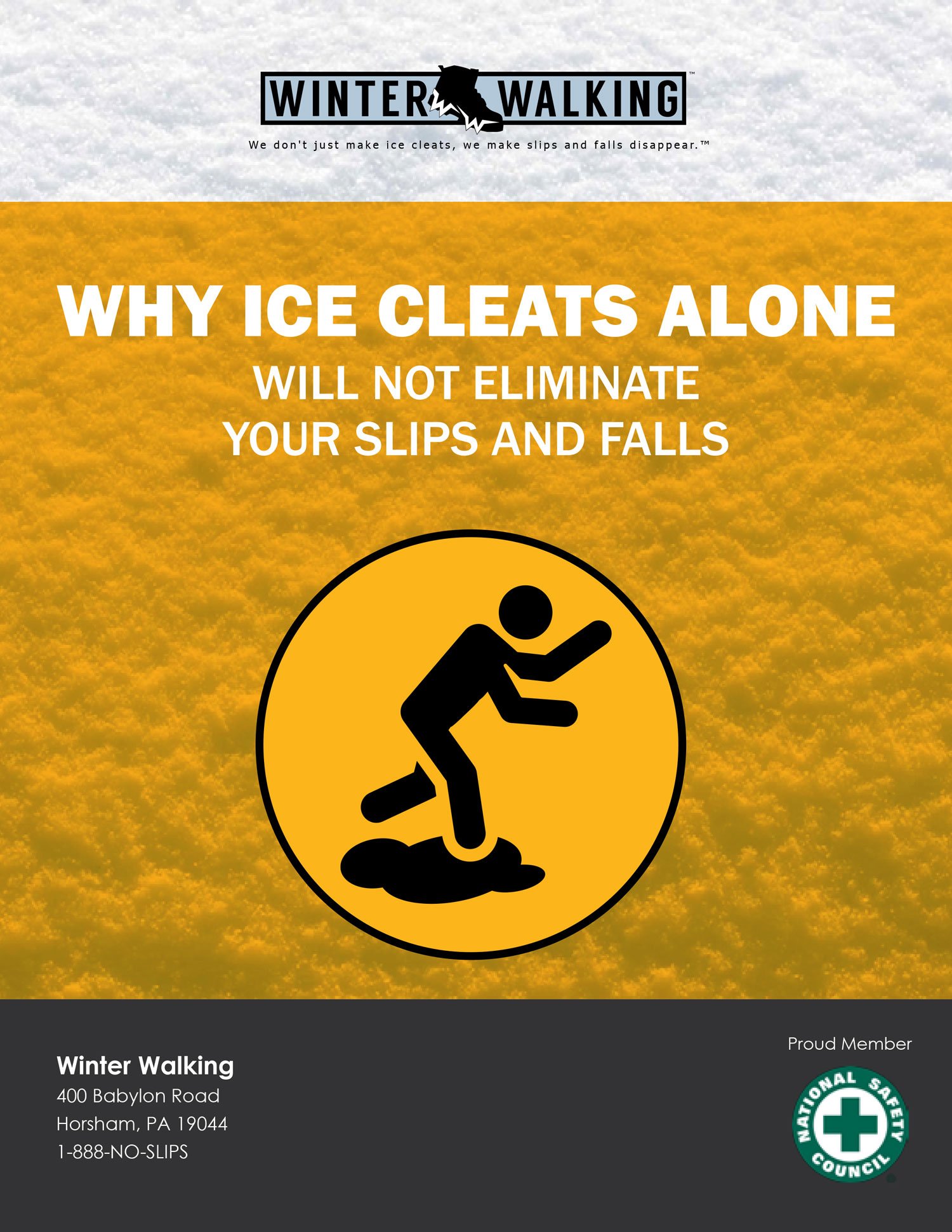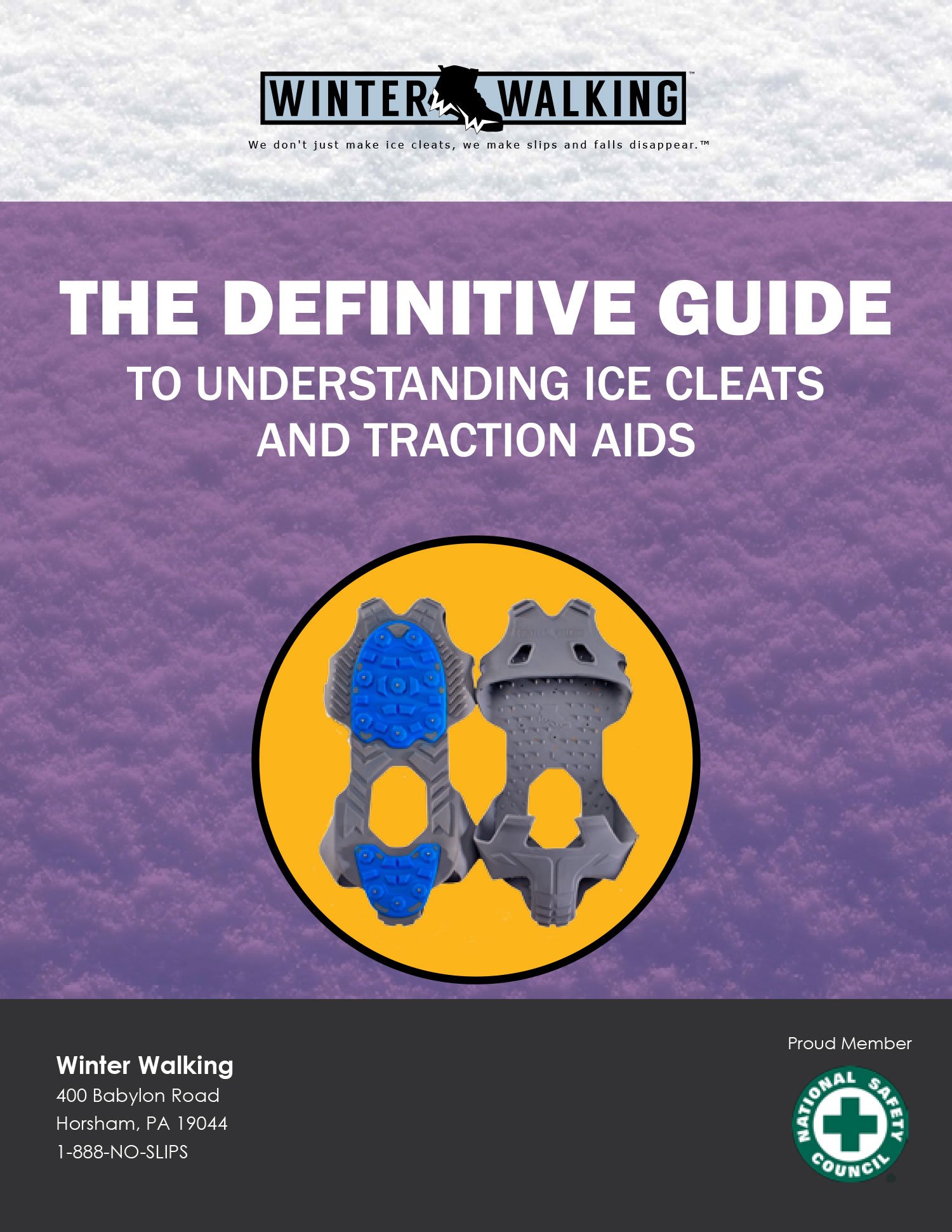Are ice cleats safe to wear indoors? In most cases, the answer would be no, traditional ice cleats are designed for a sole purpose: preventing slip and fall incidents on icy surfaces. Picture an airport in the middle of January, someplace like Chicago that experiences brutal winters.
The employees who work outdoors need footwear that will keep them slipping when they walk, so they put on a pair of ice cleats, allowing them to walk safely over slick surfaces.
Once they get inside, it’s a whole different story. Read on to learn why most ice cleats are not meant for indoor wear, and to find out more about the types of ice cleats that will allow your workers to walk safely, indoors and out.
Ice Cleat Safety
Wearing ice cleats indoors is part of a larger discussion about ice cleat safety. Perhaps the most common complaint we hear from large companies trying to get their workers to adhere to ice cleat safety is the difficulty of having to take them off before heading indoors or getting behind the wheel of a vehicle.
It’s part of safety protocol that includes steps such as:
- Your employees should develop the habit of wearing ice cleats whenever they head outside, even if they’ll only be outdoors for a few minutes.
- Inspect your ice cleats regularly to make sure the studs are intact, replacing any damaged parts as soon as possible.
- Take care when walking on steps or ramps outdoors, especially if you’re carrying things or pushing heavy loads. Remove the cleats if you’ll need to climb a ladder or cross surfaces that aren’t covered in ice or snow (concrete, granite, marble). Avoid manhole covers.
- And finally -- depending on the type of ice cleat you wear -- make sure you remove them before you head back inside.
 The people who manufacture these ice cleats typically aren’t thinking about indoor flooring when they develop their product. Why would they be? Snow and ice aren’t an indoor problem.
The people who manufacture these ice cleats typically aren’t thinking about indoor flooring when they develop their product. Why would they be? Snow and ice aren’t an indoor problem.
But this leads to a host of problems for you and your employees as you seek to prevent slip and fall incidents, as wearing traditional ice cleats indoors can actually put your employees at risk for slipping.
In other words, the thing that makes ice cleats an effective safety tool outside actually makes them hazardous indoors if employees do not remove ice cleats when they come back inside.
The traction on the bottom of a pair of ice cleats is very aggressive, made from materials designed to penetrate ice and hard-packed snow.
But when worn indoors across hard surfaced floors -- think things like tile, ceramic, linoleum, sealed concrete or epoxy -- these cleats become an extreme slip hazard. When the hard surface of these floors meets the durable cleats under foot, the result is something akin to strapping on a pair of ice skates.
(This is to say nothing of the fact that ice cleats might damage softer flooring material.)
Transitional Traction and Ice Cleats You Can Wear Indoors
Fortunately, the scenario we described above doesn’t apply to every type of ice cleat. There are now traction aids that your workers can safely wear outdoors without having to take them off when they head back inside or if they need to drive somewhere.
There’s a name for these products: the LOW-PRO® Ice Cleat, and they are cleats your employees can put on at the beginning of a shift and leave on all day. You won’t lose time having workers take these cleats on and off. You won’t risk damage to your floors. And most importantly, without creating a new slipping hazard for your employees.
These cleats are compact, light-weight, industrial strength, and easy-to-use devices for walking over snow and ice, designed to fit over all types of boots or shoes in a way that is virtually unnoticeable once you put them on.
Your workers will gain traction from 26 minimally-exposed tungsten carbide studs that allow them to grip the ground in slippery winter conditions while still being able to navigate clean surfaces with reduced risk of damaging your floors.
This makes them generally safer to wear indoors and when driving, saving your employees from having to give up valuable time removing the cleats and putting them on again.
These indoor ice cleats feature:
- A patent-pending dual-elastic design and dual rear pull-tabs for easy on/off
- An aggressively treaded sole for added traction in thicker snow
- Sizes ranging from S to XXL to fit every one of your workers
Bill Coyne is the VP of Sales for Winter Walking. He has been helping organizations across a wide variety of business sectors eliminate workplace slips and falls incidents in ice and snow for over 20 years. Email Bill directly bill@winterwalking.com or visit our website www.winterwalking.com for additional information and resources.



